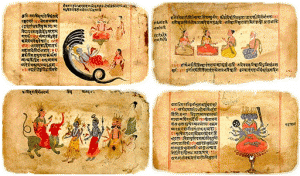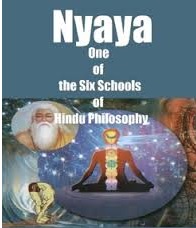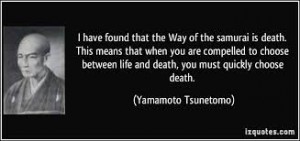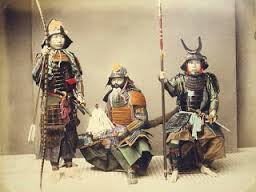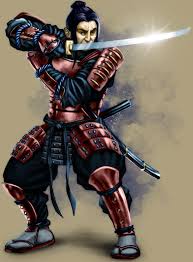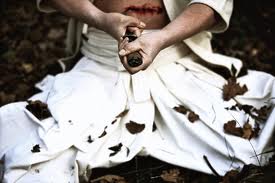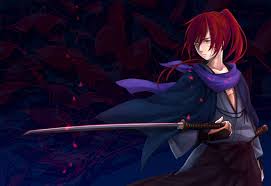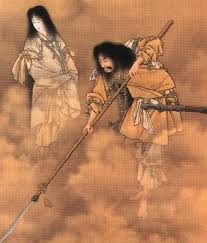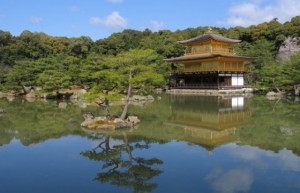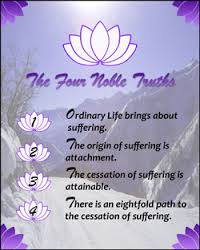Dr. V.K.Maheshwari, M.A. (Socio, Phil) B.Sc. M. Ed, Ph.D.
Former Principal, K.L.D.A.V.(P.G) College, Roorkee, India
“When these individual gods are invoked, they are not conceived as limited by the power of others, as superior or inferior in rank. Each god, to the mind of the supplicants, is as good as all the gods. He is felt at the time as a real divinity, as supreme and absolute, in spite of the limitations which, to our mind, a plurality of gods must entail on every single god. All the rest disappear for a moment from the vision of the poet, and he only who is to fulfil their desires, stands in full light before the eyes of the worshippers. . . . It would be easy to find, in the numerous hymns of the Rig-Veda, passages in which almost every single god is represented as supreme and absolute.” – Max-Muller
The oldest known religion of India, which still survives in the ethnic nooks and crannies of the great peninsula, was apparently an animistic and totemic worship of multitudinous spirits dwelling in stones and animals, in trees and streams, in mountains and stars. Snakes and serpents were divinities idols and ideals of virile reproductive power; and the sacred Bodhi tree of Buddha’s time was a vestige of the mystic but wholesome reverence for the quiet majesty of trees.” Naga, the dragon-god, Hanuman the monkey-god, Nandi the divine bull, and the Yakshas or tree-gods passed down into the religion of historic India.” Since some of these spirits were good and some evil, only great skill in magic could keep the body from being possessed or tortured, in sickness or mania, by one or more of the innumerable demons that filled the air. Hence the medley of incantations in the Atharva-veda, or Book of the Knowledge of Magic; one must recite spells to obtain children, to avoid abortion, to prolong life, to ward off evil, to woo sleep, to destroy or harass enemies.
The Vedas are considered supreme in Hinduism. They are used to verify spiritual truths as a standard testimony. The following information about Vedic gods and goddesses is culled from the Vedas only, especially from the hymns of the Rigveda, which is the mother of the other three Vedas. Hinduism underwent many changes in its long history. By Vedic gods we mean those divinities (devas) who are mentioned in the four Vedas. Information about the gods and goddesses worshipped by the Vedic people comes to us mainly from the Vedas themselves.
The Vedic hymns allude to several gods. Based upon the number of invocations addressed to each, we may identify the principal ones. However, their actual number may far exceed our current estimates, since the current version of the Vedas seem to be a remnant of the original texts that existed in the early Vedic period. The Vedas also allude to the existence of ancient gods who reside in the highest heaven and participate in the universal sacrifice performed by Brahman. In the Brihadaranyaka Upanishad, when Vidadgha Sakalya asked Yajnavalkya, how many gods were there, he began the answer saying, “As many as mentioned in the offerings made to the gods of the universe, namely three hundred and three, three thousand and three.” On beings queried further, he reduced the number gradually from three thousand three to thirty three, then to six, then to three, then to two, then to one and half and finally to one.
Yaska (probably the oldest commentator on the Vedas) gives the following classification of the Vedic gods. “There are three deities, according to the expounders of the Vedas: Agni, whose place is on the earth; Vāyu or Indra, whose place is in the air; and Surya, whose place is in the sky. These deities receive severally many appellations in consequence of their greatness, or of the diversity of their functions.” In the Rig-Veda itself this number is increased to thirty-three, of whom eleven are said to be in heaven, eleven on earth, and eleven in mid-air. “Agni, the wise god, lends an ear to his worshippers. God with the ruddy steeds, who loves praise, bring hither those three-and-thirty.” This is the number usually mentioned, though it is by no means easy to decide which are the thirty-three intended, as the lists found in various places vary considerably; whilst in another verse it is said that “three hundred, three thousand, thirty-and-nine gods have worshipped Agni.”
The earliest gods of the Vedas were the forces and elements of nature herself sky, sun, earth, fire, light, wind, water and sex. Dyaus (the Greek Zeus, the Roman Jupiter) was at first the sky itself; and the Sanskrit word deva, which later was to mean divine, originally meant only bright. By that poetic license which makes so many deities, these natural objects were personified; the sky, for example, became a father, Varuna; the earth became a mother, Prithivi; and vegetation was the fruit of their union through the rain.” The rain was the god Parjanya, fire was Agni, the wind was Vayu, the pestilential wind was Rudra, the storm was Indra the dawn was Ushas, the furrow in the field was Sita, the sun was Surya, Mitra, or Vishnu; and the sacred soma plant, whose juice was at once holy and intoxicating to gods and men, was itself a god, a Hindu Dionysus, inspiring man by its exhilarating essence to charity, insight and joy, and even bestowing upon him eternal life. A nation, like an individual, begins with poetry, and ends with prose. And as things became persons, so qualities became objects, adjectives became nouns, epithets became deities. The life-giving sun became a new sun-god, Savitar the Life-Giver; the shining sun became Vivasvat, Shining God; the life-generating sun became the great god Prajapati, Lord of all living things.
These gods belong to different sphere in creation. Based upon the number of invocations available in the Vedas, the following Vedic gods and goddesses are important: Indra, Varuna, Agni, Rudra, Mitra, Vayu, Surya, Vishnu,Savitr, Pusan, Usha, Soma, Asvins, Maruts, Visvadevas, Vasus, Adityas,Vashista, Brihaspathi, Bhaga, Rta, Rhibhus, Heaven, Earth, Kapinjala,Dadhikravan, Rati, Yama, Manyu, Purusha, Prajanya Sarasvathi. Aditi is another prominent goddess. She is considered the mother of gods.Although there are no hymns directly addressed to her, she is mentionedin several of them.
For a time the most important of the Vedic gods was Agni fire; he was the sacred flame that lifted the sacrifice to heaven, he was the lightning that pranced through the sky, he was the fiery life and spirit of the world. In some of the hymns like the following ones, we see Agni being elevated to the status of a supreme god, ” Agni is the Vaivashnara the center of all people … He is in the sky as well as at the center of the earth.” A similar notion can be found in this hymns also. “Commingling, restless, he ascends the sky, unveiling nights and all that stands or moves, as he the sole God is preeminent in greatness among all these other Gods.”
Agni is the chosen Priest, God, minister of sacrifice, the hotar, who lavishes wealth and dispels the darkness. Sapient-minded priest, truthful, most gloriously great, ruler of sacrifices, guard of Law eternal, radiant One, no sacrifice is complete without his presence. His presence verily ensures the success of a sacrifice, because whatever sacrifice he accepts goes to the gods. Agni is the messenger, the herald, master of all wealth, oblation-bearer, much beloved, who brings the willing Gods from the heavens and makes them sit on the grass with him near the sacrificial altar. Agni is the Lord of Red Steeds, who loves songs. Kind and bountiful giver of gifts, of wondrous fame, Agni is the friend of all, loved by many in their homes.The Vedic Aryans were well aware of his destructive ability, as he sets the forests aflame. “Urged by the wind he spreads through dry wood as he lists, armed with his tongues for sickles, with a mighty roar. Black is thy path, Agni, changeless, with glittering waves! when like a bull thou rushes eager to the trees, with teeth of flame, wind-driven, through the wood he speeds, triumphant like a bull among the herd of cows, with bright strength roaming to the everlasting air: things fixed, things moving quake before him as he flies
But the most popular figure in the pantheon was Indra, wielder of thunder and storm. Indra is the lord of the heavens. He is the most popular and powerful of the Vedic deities. He is described as the god of the blue sky. He rides a white elephant called Airavata and wields the dazzling weapon of lightening called Vajrayudh made by another god Tvastur. He fought many battles to drive the demons away and ensure victory to the gods. He also destroyed many cities of his enemies. His most famous achievement was slaying of Vratasura. He killed the demon of the dark skies (symbolically the clouds) with his weapon (the lightning) and released the cows (waters) that were held in captivity by him For Indra brought to the Indo-Aryans that precious rain which seemed to them even more vital than the sun; therefore they made him the greatest of the gods, invoked the aid of his thunderbolts in their battles, and pictured him enviously as a gigantic hero feasting on bulls by the hundred, and lapping up lakes of wine. His favorite enemy was Krishna, who in the Vedas was as yet only the local god of the Krishna tribe. Vishnu, the sun who covered the earth with his strides, was also a subordinate god, unaware that the future belonged to him and to Krishna, his avatar. This is one value of the Vedas to us, that through them we see religion in the making, and can follow the birth, growth and death of gods and beliefs from animism to philosophic pantheism, and from the superstition of the Atharva-veda to the sublime monism of the Upanishads.
In Varuna we see the earliest signs of an omniscient, omnipresent, omnipotent and compassionate God, the precursor the Upanishadic Brahman. Varuna is the ruler of the worlds, the ordainer and enforcer of law and upholder of the world order. In one of the Rigvedic hymns he is described as the Lord of the earth and heaven who sustains the tree that has its roots in heaven and braches down below. Varuna is the knower of all and controller of all. He is the supreme God capable of controlling and dispensing justice. “He knows the path of birds that fly through heaven, and, Sovran of the sea. He knows the ships that are thereon. True to his holy law, he knows the twelve moons with their progeny. He knows the moon of later birth. He knows the pathway of the wind, the spreading, high, and mighty wind. He knows the Gods who dwell above. Varuna, true to holy law, sits down among his people; he, Most wise, sits there to govern. all.”And how does he know all this? With innumerable spies (rays of light) who are spread every where acting as his eyes and ears, he knows all that goes on in this world. If two people talking together, beware that Varuna is there watching every thing that is going on. He causes the rains to come down and the sun to travel. He makes the rivers flow. The rivers that flows because of him know no weariness, nor they cease flowing.
The Rudra of the Rigveda is a militant god of storms and lightening and a “provider of medicines”. Though he did not enjoy the same status as Indra, Rudra definitely enjoyed his own importance in the Vedic pantheon because of his tempestuous nature, his association with storms and storm gods called Maruts and his ability to bring medicines to the people to prolong their lives. He is a fierce looking god, well built and golden in color, with braided hair, “of firm limbs, multiform, strong, tawny, who adorns himself with bright gold decorations. He wields the thunder bolt, bow and arrow, and sends down streaks of lightening shaking the worlds.The following hymn is one such example, which in many ways sounds like a verse from the Svetavatara Upanishad, “O Rudra, harm not either great or small of us, harm not the growing boy, harm not the full-grown man. Slay not a sire among us, slay no mother here, and to our own dear bodies, Rudra, do not harm. Harm us not, Rudra, in our seed and progeny, harm us not in the living, nor in cows or steeds, Slay not our heroes in the fury of thy wrath. Bringing oblations evermore we call to thee. Even as a herdsman I have brought thee hymns of praise: O Father of the Maruts, give us happiness, Blessed is thy most favoring benevolence, so, verily, do we desire thy saving help.”
Mitra uphold the law, cause the cows to stream, the plants to flourish, and, “scattering swift drops, send down the rain-flood”. We are informed from the hymns that Mitra stirs men to action and sustains both earth and heaven. Both Mitra and Varuna are guardians of the world, who sit in a gold hued chariot from day break and behold the infinity.
Vayu is a described in the Rigveda as a beautiful god, ideally the first partaker of soma juice which he seems to be especially fond of. He is swift as mind, the thousand-eyed and the Lords of thought. He drives a chariot yoked with steeds, whose colour vary from red to purple and the number from two to hundreds and even thousands, depending upon the occasion. He is praised in the hymns as the Intelligence, who illumines the earth and heaven and makes the Dawn to shine. For him the dawn spreads her radiant garments in the dark and distant skies. Invisible, he moves in the heavens as well as in the human body as the vital breath. For his sake the cows yield milk, and to him the coward prays for luck. He is a protector of people whom he protects from every world and from the highest world of Gods (their wrath). In the post Vedic period, Vayu became the lord of the north western quarters and father of Hanuman and Bhima, symbols of immense strength, loyalty and brotherhood.
Surya, the blazing sun. He is one of the Adityas, god among gods, the light that is most excellent, golden colored, who rides the skies in his golden chariot, drawn by seven bay horses, who are described in the hymns as the daughters of heaven. He is said to be extremely brilliant, with radiant hair, who files in the skies like a bird and shines brightly like a jewel. Giver of power and strength, destroyer of laziness and darkness, with bright light radiating from him, he knows all that lives. Because of his power and golden color, he is also depicted as provider of good health, who removes the heart disease and takes away the yellow hue (jaundice) to be given to the parrots, starlings and haritala trees. In the Vedic symbolism, Surya symbolizes Brahman. The world of the sun is frequently mentioned as the place where the immortal world of Brahman is located, which the liberated souls reach upon their departure from the earth travelling by the northern path.
The Vishnu of the Rigvedic times, is a minor god,. He is one of the Adityas, but with some qualities of the Vishnu of Bhagavatism. Like the Vishnu of later days, he is a lover and protector of devotees in whose loved mansion all god loving creatures live happily. Like the Vishnu in his incarnation as Vamana, who strode the earth and the heaven in two pace and then crushed the demon king Bali with his third pace, the Vedic Vishnu is also a god of three strides, who upholds the threefold existence, the earth, the heaven and all living creatures and in whose three wide-extended paces inhabit all living creatures. Vishnu is the ancient and the last, the primeval germ, with power supreme. Together with his spouse, he ordains and as a ruler of the three worlds, he helps the Aryan man, giving the worshipper his share of Holy Law.
Savitr is an Aditya who is described as golden eyed, golden handed and golden tongued. A solar deity, he is regarded as the sun before sun rise, but sometimes distinguished from the sun. He not only represents the golden sun of the morning, but the hidden sun of dark night also. Riding a golden chariot he comes, looking on everyone. He moves both ways, upward and downward, and travels along “ancient dustless paths in the air’s mid region with two bright adorable bays.” From far away he comes to chases away all distress and sorrow, the rakshasas and the Yatudhanas and illumines the worlds. Mounting his golden chariot that is decked with colourful pearls and lofty with golden pole, he goes to darksome regions to illumine them. The Gayatri mantra is addressed to Savitr of adorable splendour for the enlightenment of human consciousness.
Pusan is the lord of the paths, who protects people from wild animals and makes their paths in solitary places pleasant to tread. He is described variously as a cloud born god, lord of the path, wonder worker, lord of all prosperity and wielder of golden sword. Pusan is the guardian of cattle who shows the way carrying a goad with a horny point to rich meadows where the grass is thick and temperature moderate Pusan stirs our thoughts, drives away the enemies, inspires the miserly to make generous donations.
Usha is dawn, the daughter of the sky, lady of the light, who rouses all life. She stirs all creatures that have feet, and makes the birds of air fly up. Borne on a hundred chariots, she yokes her steed before the arrival of the sun and is never late. Loved by the Asvins, sister of gods, she eludes the Sun who is always eager to catch her. She brings not just light to the sleeping mankind, but hope, happiness, riches and all the good things. Goddess of light and beauty, whom the Rsis of old time invoked for their protection and help, Usha is the gods’ beloved sister, whom she brings to the earth for enjoying drops of the soma juice offered by the worshippers. Some of the hymns speak of not one dawn but many the dawns that have gone before. The hymns addressed to Usha in the Vedas are among the most poetic and beautiful hymns found in the Vedas. The following verses illustrates this point.”She, like a dancer, puts her broidered garments on: as a cow yields her udder so she bares her breast, creating light for all the world of life…”
Soma is the god of inspiration, the intoxicant who stirs the minds, lures the gods and brings them to the place of worship. One of the most popular gods of the Rigvedic hymns, the entire 9th Mandala of the scripture is dedicated to him. Also known as Indu or Soma Pavamana, he brings joy into the lives of people, cures them from diseases and leads them to the worlds of bliss and immortality. He gives strength not only to mortals, but to the gods as well. Because of him, Indra was able to slay Vrata. Because of him Agni maintains his sway. He is also known as Lord of the speech (Vachspati), because of his intoxicating influence on the movement of speech. On the physical plane Soma is some kind of intoxicating juice. It was probably extracted from some leaves, or mushrooms or some other substance by pressing them between two stones. We have completely lost the knowledge of its preparation. People have been trying for the last several centuries to know the exact ingredients with which the Vedic people used to make Soma juice, but have not succeeded so far.
The Asvins are twin deities whose origin is shrouded in myth, mystery and symbolism. A number of hymns are addressed to them because of their healing and curative powers. They said descend to earth thrice a day to help the mankind with their restorative and curative powers. The Asvins are considered to be the brothers of Usha, the goddess of dawn and may actually represent twilight, when darkness and light appear intertwined on the horizon just before dawn as well as before dusk.The Rigvedic hymns describe them as lords of hundred powers, who can make the blind and lame see and walk, the injured recover quickly from their afflictions, help men produce offspring or the cows yield more milk. They can reduce the heat in the human body, cure the septic sores, store the germ of life in female creatures and perform even surgery.
Maruts are powerful and destructive storm gods, who lash the world from end to end, make the mountains rock and reel, rend the forest-kings apart, make the earth tremble, and drench the earth with heavy rains. Mighty and well-armed, impetuous in their haste, decked in glittering gold ornaments, they send their windless rain even on the desert places. When they inundate the earth they spread forth darkness even in day time, with the water filled rain clouds. Loud roarers, giving strength, devourers of the foe, they make the winds and the lightning with their powers. The Maruts are positively destructive forces of the heave, ferocious but not wicked. They are divine beings, who work for the welfare of the world and men, though they do it in their quite noisy way. The Maruts give strength to the worshippers to make them invincible in battle, bring wealth to the people, increase their progeny and prolong life.
The word Visvadevas means lords of the universe. In the Vedas a number of hymns are addressed to them. The Visvadevas are none but the popular gods of the Vedas. When they were collectively invoked through a common ritual, they were addressed as Visvadevas. In the hymns of the Visvadevas, we generally find the names of such popular gods as Bhaga, Daksa, Mitra, Aditi, Aryaman, Varuna, Soma, the Asvins, Saraswathi, Vayu, Prithvi, Father Heaven, Soma, Pusan, Indra, Tarksya, Maruts, Agni , Varuna, Mitra, Rta, and the dikpalas.
The Rigvedic people believed that the devas sprang from a common parentage and were helpful in nature, in contrast to the demons who were wicked and troublesome. Although each god in the pantheon was endowed with specific qualities and responsibilities.The concept of Visvadevas changed during the post Vedic period especially with the emergence of the Puranas and its rich lore of mythology. The list was reduced to just ten gods namely Vasu, Satya, Kratu, Daksa, Kala, Dhriti, Kuru, Pururavas, and Madravas.
Dhara (the earth), Anala (the fire), Apa (waters), anila (the wind), Dhruva (the pole star), soma (the moon), Prabhasa (the light) are the eight vasus who are described to be attendants of Indra, the lord of the heavens. In course of time these deities attained popularity in different areas. Dhruva became a symbol of austerity, determination and a popular name in the Hindu pantheon because of his association with the polestar. The earth became a mother deity, bearing the burden of the beings, a symbol of patience and fortitude. Soma came to be associated with soma juice and attained popularity because of his significance in the Vedic rituals.
The Adityas are upholders of Laws. ” Upholding that which moves and that which moves not, Adityas, Gods, protectors of all beings, provident, guarding well the world of spirits, true to eternal Law, the debt-exactors,” they illuminate the world, drive away darkness, nourish the beings, regulate relationships and personify the laws of the universe and mankind. Originally six in the Rigveda, their number increased to 12 during the later Vedic period. The 12 Adityas are: Mitra, Varuna, Aryaman, Daksha, Bhaga, Amsa, Tvastr, Savitr, Pusan, Sakra, Vivasvat and Visnu. We have given a general description of some of the Adityas already above.
Vashistha is not a god but a sage, or the head of a particular class of brahmin priests, who is described in a hymn as born to Urvasi and Varunamitra out of their conjugal love. He is also described as born from grass and as a fallen drop, whom gods in heavenly fervor laid in a lotus blossom.
Brahmanaspati, popularly known as protector of bodies, who gives wealth, increases the agricultural produce and protects the heroes in the battle field from enemy heroes. He is the priest of heaven who makes the oblation prosper. He promotes the course of sacrifice. Without Brahmanaspati, no sacrifice is complete.
Brihaspati is also known as Ganapathi Brahmanaspati and considered by some scholars as a precursor to the latter period Ganapathi. He is also an Aditya, son of Aditi, a god of bright light. He is a giver and supporter and bestower of bliss, who discovers treasures and whose gifts are faithful. Since he grants boons, horses and heroes, he is approached by the rich and poor alike for abundance and happiness.
Rta is the rhythmic pattern of the universe. It is the orderly way in which the world regulates itself. Rta determines the usual paths by which the heavenly objects, the sun, the moon, the stars, the nine planets, conduct themselves. Rta is responsible for many other things: the manner in which the seasons (ritus) come and go, the way the rains fall upon the earth, the way the crops are harvested, the way the people live and die, and the cattle yield wealth through milk and progeny.
The Rbhus are wise and skilful craftsmen, dexterous-handed, deft in work and gracious, who are said to be the sons of Sudhavan.. The hymns addressed to Rbhus generally mention the names of Rbhu, Vibhvan, Vaja and speak of their craftsmanship and how they were promoted to the rank of gods because of their skills and their “cunning”.
In the hymns addressed to heaven and earth, they are referred as two great mothers. Between them the God, the effulgent sun, travels by fixed decree. These two, the Heaven and the Earth bestow prosperity on all and sustain the region. They are holy, wise and the spirited. They keep the truth of all that stands and all that moves and were made beautiful by the sun with his garment of light.
Kapinjala is a bird of good omen with sweet and flute like melodious voice whose sounds are compared to the utterances of a Sama-chanter. The invokers of this bird of heaven pray for the protection of the bird from the attacks of falcon, eagle and hunter’s arrows. Associated with good luck and happy omens, there are at least two hymns in the Rigveda addressed to this mystic bird of melodious notes.
Dadhivakran is a mighty stallion that was given to Puru by gods. It is swift of foot and shines bright. It is described as the giver of many gifts, who visiteth all people, impetuous hawk, swift and of varied colour, like a brave King. Some hymns in the Rigveda are entirely addressed to Dadhivakran.
There is a hymn in the Rigveda addressed to sage Agastya by his wife Lopamudra as an invocation to Ratidevi to come to the aid of the aging couple and rekindle love in their bodies.
Yama is the controller, god of justice and ruler of the dead and departed who go to the region of hell. He is also the ruler of the southern quarter, wears red garments and carries a mace as his weapon.The Rigveda describes Yama as Vivasvan’s Son, who gathers men together, who traveled to the lofty heights above men and who searches out and shows the path to many. Dark-hued, insatiate, with distended nostrils, Yama’s two envoys said roam among the People and keep a watch. “Into the six Expanses flies the Great One in Trkadrukas. The Gayatri, the Trstup, all metres in Yama are contained.”
There are some hymns in the Rigveda which are addressed to Manyu a war god, wielder of thunder, slayer of foes, of Vrtra, and of Dasyu, of surpassing vigor, fierce, queller of the foe, and self-existent. He is beseeched to bring wealth and health. Manyu is a war god, who is considered to be Indra himself.
The famous Purusha Sukta speaks of the Universal Purusha, of a thousand heads, a thousand eyes, and a thousand feet who pervading earth from every side fills a space ten fingers wide. “This Purusha is all that yet hath been and all that is to be; the Lord of Immortality which waxes greater still by food. So mighty is his greatness; yea, greater than this is Purusa. All creatures are one-fourth of him, three-fourths eternal life in heaven.”
From this Purusha was born Viraj (world soul) and from Viraj again a second Purusha (hiranyagarbha) was born. As soon as he was born, the gods gathered and sacrificed him. From that great sacrifice, from his various bodily parts were born all the animals, the Riks, Sama hymns and Yajus, the sun and the moon and all the four castes, Indra, Agni, Vayu, the earth and the sky and all the regions. The Purusha Sukta is very controversial hymn. It raises a number of interesting questions, about which we can only speculate but cannot give a definite answer.
Prajanya is a rain god, ferocious, whom all life fears, the bull who lays in the plant, the seed, who smites the trees apart with lightning and slays the demons. All life fears him and the sight of his mighty weapon. He is the slayer of demons, who sends the rains down. He made the desert places fit for travel probably by bringing the rains. Prajanya is a sky god. He seems to have become Indra, for Indra is unknown to other members of the Aryan family. In the Vedas Prajanya is another name for the sky.
In the Rigvedic hymn addressed to Saraswathi, she is depicted as a river goddess, who slays the Parvathas with her might, casts down those who scorn the gods and makes poison flow away from the waters. She is the giver of opulence, strength and wealth. She has seven sisters, sprung from three fold source, who is invoked in every deed of might and sought for treasures.
In the hymn addressed to her, she is beseeched to keep flowing gracefully and not to spurn people, so that they would not be forced to go to far away countries. Saraswathi subsequently became a goddess of learning and consort of Brahma. But in the Rigveda, she is a river goddess with seven sisters, who helps the gods, destroys their enemies and provides waters to the five tribes. There is no association with either Brahma or with learning.
These deities, though spoken of as immortal, are not said to be self-existent beings; in fact their parentage in most cases is given; but the various accounts of their origin do not agree with each other. Agni and Savitri are said to have conferred immortality upon the other gods; whilst it is also taught that Indra obtained this boon by sacrifice. An interesting account is given in the Satapatha Brāhmana of the means by which the gods obtained immortality, and superiority over the asuras or demons. All of them, gods and demons alike, were mortal, all were equal in power, all were sons of Prajāpati the Creator. Wishing to be immortal, the gods offered sacrifices liberally, and practised the severest penance; but not until Prajāpati had taught them to offer a particular sacrifice could they become immortal. They followed his advice, and succeeded. Wishing to become greater than the asuras, they became truthful. Previously they and the asuras spoke truthfully or falsely, as they thought fit; but gradually, whilst they ceased from lying, the asuras became increasingly false; the result was that the gods after protracted struggles gained the victory. Originally the gods were all equal in power, all alike good. But three of them desired to be superior to the rest, viz. Agni, Indra, and Surya. They continued to offer sacrifices for this purpose until it was accomplished. Originally there was not in Agni the same flame as there is now. He desired, “May this flame be in me,” and, offering a sacrifice for the attainment of this blessing, obtained it. In a similar manner Indra increased his energy, and Surya his brightness. These three deities form what is commonly described as the Vedic Triad. In later times other three took their place, though an attempt is made to show them to be the same.
According to the Vedas, Brahman manifested a part of Himself during creation and diversified Himself into Isvara, Hiranyagarbha and Viraj. He created the earth, the mid-region, the heaven. He created gods and celestial beings, demons and humans/ God and celestial beings reside in the heaven and the mid-regions respectively. Humans and other mortal beings inhabit the earth or our world. The demons reside in the nether regions below the earth. In the mortal world, He manifested as Death (or Kala) and became its ruler. He created hunger and thirst and subjected the beings, including the gods in the heaven to the same. To satisfy them He created food of several kinds. The gods have immense powers, but they do not have the ability to make food for themselves. Human beings have the ability to make food for themselves and others, but do not have the supernatural powers of the gods. Brahman created this distinction to ensure that both gods and humans live in harmony, depending upon each others, and participate in creation by doing their dutiful duties. Thus it is the duty (dharma) of gods to help humans and it is the duty (dharma) of humans to live helplessly and help gods and other beings with nourishment by performing sacrifices
These gods are human in figure, in motive, almost in ignorance. One of them, besieged by prayers, ponders what he should give his devotee: “This is what I will do no, not that; I will give him a cow or shall it be a horse? I wonder if I have really had soma from him?” Some of them, however, rose in later Vedic days to a majestic moral significance.
As the number of the gods increased, the question arose as to which of them had created the world. This primal role was assigned now to Agni, now to Indra, now to Soma, now to Prajapati. One of the Upani- shads attributed the world to an irrepressible Pro-creator:
Verily, he had no delight; one alone had no delight; he desired a second. He was, indeed, as large as a woman and a man closely embraced. He caused that self to fall (v pat) into two pieces; there-from arose a husband (pati) and a wife (patni). Therefore . . . one’s self is like a half fragment; . . . therefore this space is filled by a wife. He copulated with her. Therefore human beings were produced. And she bethought herself: “How, now, does he copulate with me after he has produced me just from himself? Come, let me hide myself.” She became a cow. He became a bull. With her he did indeed copulate. Then cattle were born. She became a mare, he a stallion. She became a female ass, he a male ass; with her he copulated of a truth. Thence were born solid hoofed animals. She became a she-goat, he a he-goat; she a ewe, he a ram. With her he did verily copulate. Therefore were born goats and sheep. Thus indeed he created all, whatever pairs there are, even down to the ants. He knew: “I, indeed, am this creation, for I emitted it all from myself.” Thence arose creation. 00
In this unique passage we have the germ of pantheism and transmigration: the Creator is one with his creation, and all things, all forms of life, are one; every form was once another form, and is distinguished from it only in the prejudice of perception and the superficial separateness of time. This view, though formulated in the Upanishads, was not yet in Vedic days a part of the popular creed; instead of transmigration the Indo-Aryans, like the Aryans of Persia, accepted a simple belief in personal immortality. After death the soul entered into eternal punishment or happiness; it was thrust by Varuna into a dark abyss, half Hades and half hell, or was raised by Yama into a heaven where every earthly joy was made endless and complete. “Like corn decays the mortal,” said the Katha Upanishad, “like corn is he born again.”
The Vedas declare that the human body is similar to the body of the Cosmic Self, Purusha, who manifested in creation as the Lord of the Universe. Just as there are four tiers in the universe, there are four planes in a human body. The head represents the sky or the heaven. The trunk including the chest and the stomach represents the mid-region, where breath flows and the heart beats. The hips and the legs represent the mortal world. Just as the gods reside in the macrocosm, they reside in our bodies also in their respective sphere as various organs, namely the organs of action (karmendriyas) such as the five organs of speech, such as hands, feet etc., the organs of perception such as the eye, the ears, the nose, the tongue etc., and the internal organs, namely the mind, the ego and the intelligence. Just as they depend upon our sacrificial offerings in the external world for their nourishment, they depend upon us internally for nourishment through the food we eat. While in the external world, the gods receive their share of offerings from fire who is the first recipient of the offerings in the sacrifices since we pour them into fire only, in the body also the gods receive their offering from the digestive fire which resides in the digestive tract. From there the food is supplied to various divinities through the five breathing channels called Prana, Apana, Samana, Vyana and Udana. The Upanishads affirm that just as Vayu rules the mid-region and pervades the earth and the heaven, Prana pervades the whole body and acts as the overlord of the organs.
Professor Williams says ”that the deified forces addressed in the Vedic hymns were probably not represented by images or idols in the Vedic period, though doubtless the early worshippers clothed their gods with human forms in their own imaginations.” Professor Müller speaks more positively: “The religion of the Veda knows of no idols. The worship of idols in India is a secondary formation, a later degradation of the more primitive worship of ideal gods.” Dr. Bollensen writes, “From the common appellation of the gods as divo naras, ‘men of the sky,’ or simply naras, ‘men,’ and from the epithet nripesas, ‘having the form of men,’ we may conclude that the Indians did not merely in imagination assign human forms to their gods, but also represented them in a sensible manner. Thus a painted image of Rudra (Rig-Veda, ii. 33, 9) is described with strong limbs, many-formed, awful, brown, he is painted with shining colours.’” “Still clearer appears the reference to representations in the form of an image. ‘I now pray to the gods of these (Maruts).’ Here it seems that the Maruts are distinguished from their gods, i.e. their images.’” “There is in the oldest language a word, ‘Sandris,’ which properly denotes ‘an image of the gods.’
In the earlier Vedic religion there were, so far as the evidence goes, no temples and no images; altars were put up anew for each sacrifice as in Zoroastrian Persia, and sacred fire lifted the offering to heaven. Vestiges of human sacrifice occur here, as at the outset of almost every civilization; but they are few and uncertain. Again as in Persia, the horse was sometimes burnt as an offering to the gods.The usual offering was a libation of soma juice, and the pouring of liquid butter into the fire. The sacrifice was conceived for the most part in magical terms; if it were properly performed it would win its reward, regardless of the moral deserts of the worshiper. The priests charged heavily for helping the pious in the ever more complicated ritual of sacrifice: if no fee was at hand, the priest refused to recite the necessary formulas; his payment had to come before that of the god.
Rules were laid down by the clergy as to what the remuneration should be for each service how many cows or horses, or how much gold; gold was particularly efficacious in moving the priest or the god. The Brahmanas, written by the Brahmans, instructed the priest how to turn the prayer or sacrifice secretly to the hurt of those who had employed him. Other regulations were issued, prescribing the proper ceremony and usage for almost every occasion of life, and usually requiring priestly aid. Slowly the Brahmans became a privileged hereditary caste, holding the mental and spiritual life of India under a control that threatened to stifle all thought and change.
The gods who once ruled the Vedic minds were gradually replaced and relegated into a subordinate position by subsequent developments which heralded the emergence of its principal traditions, namely Shaivism, Vaishnavism, Shaktism and Smaraism. In this, the ruling classes from all parts of India, as patrons of priestly families, played a significant role, in addition to many foreign rulers like Kushanas, Sakas, and Pahlavas. What survived from the Vedic religion were the priestly traditions and practices and their philosophical base.

